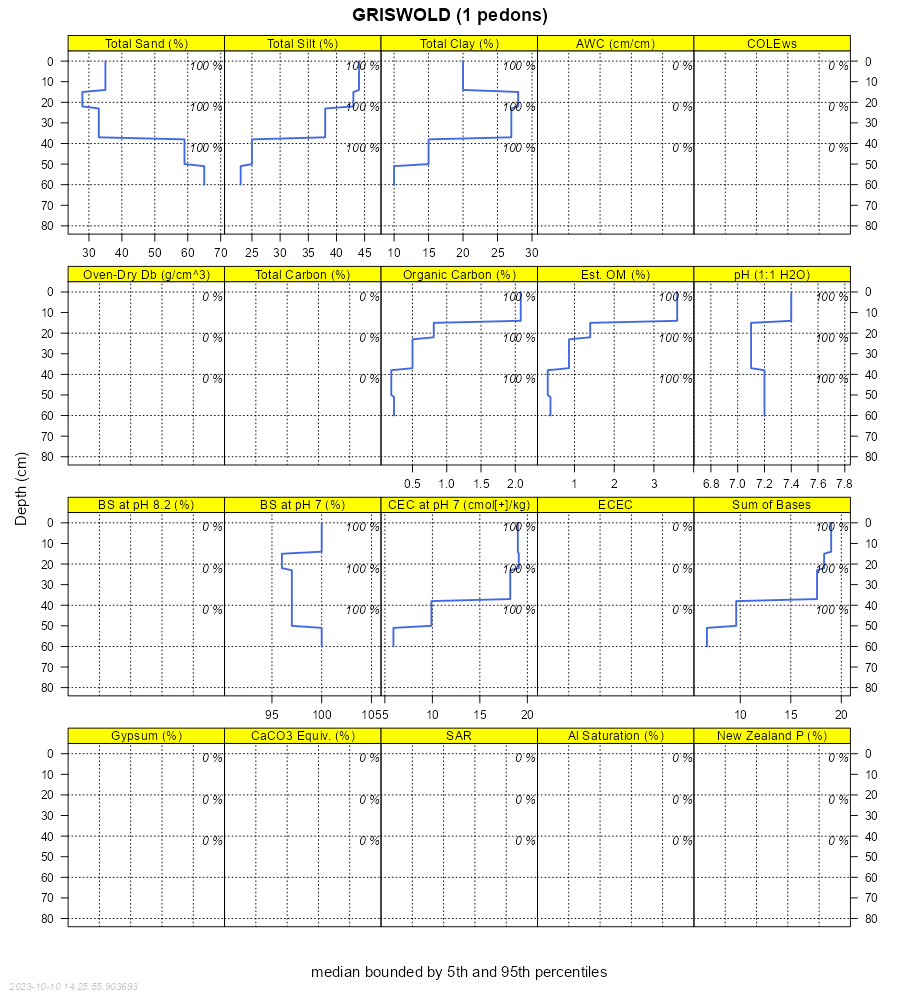| Griswold loam, 6 to 12 percent slopes, eroded | 363D2 | 363 | 1407190 | 2szg5 | il007 | 2006 | 1:12000 |
Griswold loam, 4 to 6 percent slopes, eroded | 363C2 | 178 | 1407189 | 2szg7 | il007 | 2006 | 1:12000 |
Griswold loam, 2 to 4 percent slopes | 363B | 346 | 2376209 | 2szg8 | il031 | 2008 | 1:12000 |
Griswold loam, 4 to 6 percent slopes, eroded | 363C2 | 185 | 2376210 | 2szg7 | il031 | 2008 | 1:12000 |
Griswold loam, 6 to 12 percent slopes, eroded | 363D2 | 1514 | 937027 | 10g1p | il103 | 2004 | 1:12000 |
Griswold loam, 4 to 6 percent slopes, eroded | 363C2 | 6109 | 182685 | 2szg7 | il111 | 1997 | 1:12000 |
Griswold loam, 6 to 12 percent slopes, eroded | 363D2 | 1179 | 182688 | 2szg5 | il111 | 1997 | 1:12000 |
Griswold loam, 2 to 4 percent slopes | 363B | 645 | 182682 | 2szg8 | il111 | 1997 | 1:12000 |
Griswold loam, 6 to 12 percent slopes, eroded | 363D2 | 3777 | 208602 | 2szg5 | il141 | 2005 | 1:12000 |
Griswold loam, 2 to 4 percent slopes | 363B | 1976 | 1479167 | 2szg8 | il141 | 2005 | 1:12000 |
Griswold loam, 6 to 12 percent slopes, eroded | 363D2 | 890 | 1592019 | 2szg5 | il177 | 2006 | 1:12000 |
Griswold loam, 6 to 12 percent slopes, eroded | 363D2 | 21629 | 174059 | 5v3t | il201 | 1997 | 1:12000 |
Griswold loam, 2 to 4 percent slopes | 363B | 4981 | 174057 | 2szg8 | il201 | 1997 | 1:12000 |
Griswold loam, 0 to 2 percent slopes | GtA | 1577 | 160868 | 5dd9 | in085 | 1985 | 1:20000 |
Griswold silt loam, 2 to 6 percent slopes, eroded | 7463B2 | 6442 | 423282 | 2szfx | wi021 | 1972 | 1:15840 |
Griswold silt loam, 6 to 12 percent slopes, eroded | 7463C2 | 4218 | 423283 | 2szfy | wi021 | 1972 | 1:15840 |
Griswold silt loam, 12 to 20 percent slopes, eroded | 7463D2 | 1145 | 423284 | 3074m | wi021 | 1972 | 1:15840 |
Griswold loam, 6 to 12 percent slopes | 7363C | 9452 | 753516 | 2szg3 | wi025 | 1972 | 1:15840 |
Griswold loam, 12 to 20 percent slopes, eroded | 7363D2 | 2131 | 753517 | 2szg6 | wi025 | 1972 | 1:15840 |
Griswold loam, 2 to 6 percent slopes | 7363B | 1913 | 753515 | 2szg1 | wi025 | 1972 | 1:15840 |
Griswold silt loam, 6 to 12 percent slopes, moderately eroded | 7463C2 | 1309 | 425278 | g8jn | wi045 | 1969 | 1:12000 |
Griswold silt loam, 2 to 6 percent slopes, moderately eroded | 7463B2 | 475 | 425277 | g8jm | wi045 | 1969 | 1:12000 |
Griswold silt loam, 2 to 6 percent slopes | 7463B | 2375 | 423688 | 2szfw | wi047 | 1974 | 1:20000 |
Griswold silt loam, 6 to 12 percent slopes, eroded | 7463C2 | 1036 | 423689 | 2szfy | wi047 | 1974 | 1:20000 |
Griswold silt loam, 0 to 2 percent slopes | 7463A | 259 | 423687 | 3074l | wi047 | 1974 | 1:20000 |
Griswold sandy loam, 2 to 6 percent slopes | 7363B | 626 | 423789 | 3074p | wi055 | 1976 | 1:15840 |
Griswold sandy loam, 6 to 12 percent slopes, eroded | 7363C2 | 332 | 423790 | 3074q | wi055 | 1976 | 1:15840 |
Griswold loam, 6 to 12 percent slopes, eroded | 7363C2 | 296 | 3268781 | 2szg5 | wi101 | 2023 | 1:15840 |
Griswold loam, 2 to 6 percent slopes | 7363B | 278 | 3268780 | 2szg1 | wi101 | 2023 | 1:15840 |
Griswold loam, 2 to 6 percent slopes, eroded | 7363B2 | 5955 | 426314 | 2szg2 | wi105 | 1970 | 1:20000 |
Griswold loam, 6 to 12 percent slopes, eroded | 7363C2 | 5251 | 426315 | 2szg5 | wi105 | 1970 | 1:20000 |
Griswold loam, 12 to 20 percent slopes, eroded | 7363D2 | 396 | 426316 | 2szg6 | wi105 | 1970 | 1:20000 |
Griswold loam, 0 to 2 percent slopes | 7363A | 174 | 426313 | 3074k | wi105 | 1970 | 1:20000 |
Griswold silt loam, mottled subsoil variant, 0 to 3 percent slopes | 7188A | 1577 | 425627 | g8wx | wi127 | 1967 | 1:15840 |
Griswold loam, 6 to 12 percent slopes, eroded | 7363C2 | 903 | 425625 | 2szg5 | wi127 | 1967 | 1:15840 |
Griswold loam, 2 to 6 percent slopes | 7363B | 866 | 425624 | 2szg1 | wi127 | 1967 | 1:15840 |
Griswold loam, 12 to 20 percent slopes, eroded | 7363D2 | 292 | 425626 | 2szg6 | wi127 | 1967 | 1:15840 |
Griswold silt loam, 2 to 6 percent slopes | 7463B | 533 | 3403428 | 2szfw | wi133 | 2023 | 1:15840 |
Griswold silt loam, mottled subsoil variant, 2 to 6 percent slopes | 7188B | 309 | 3403426 | g93z | wi133 | 2023 | 1:15840 |
Griswold silt loam, 6 to 12 percent slopes, eroded | 7463C2 | 173 | 3403427 | 2szfy | wi133 | 2023 | 1:15840 |














